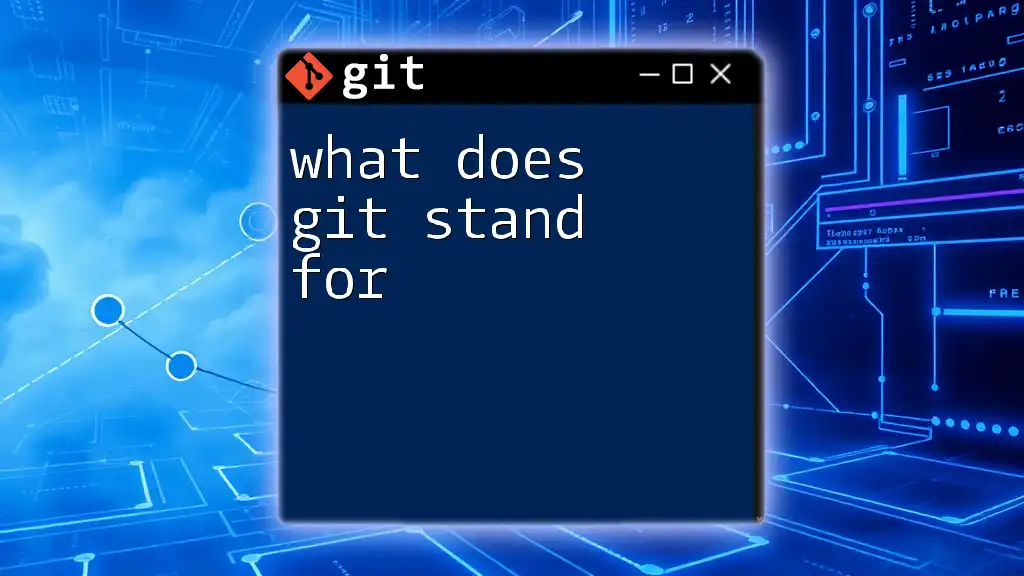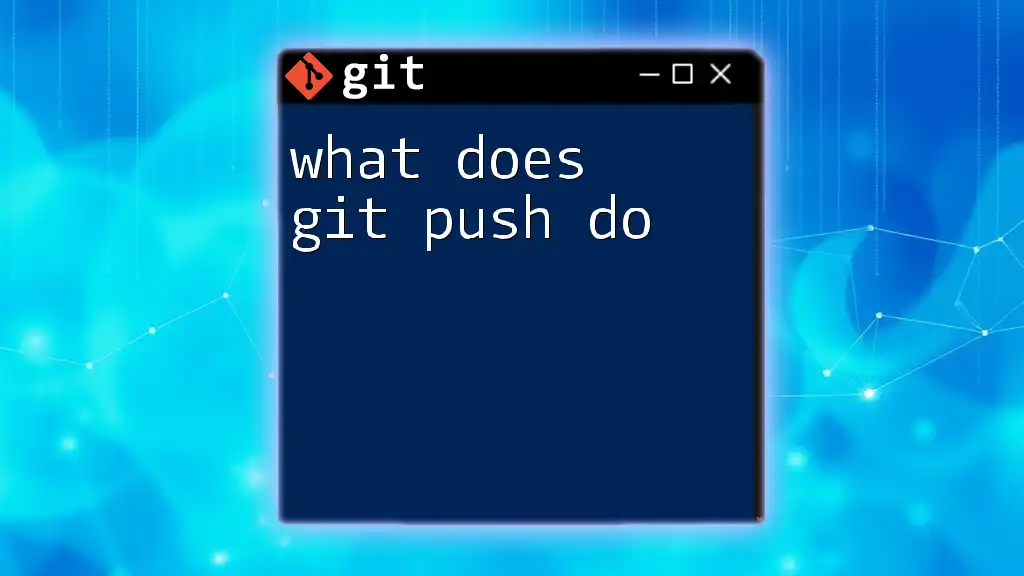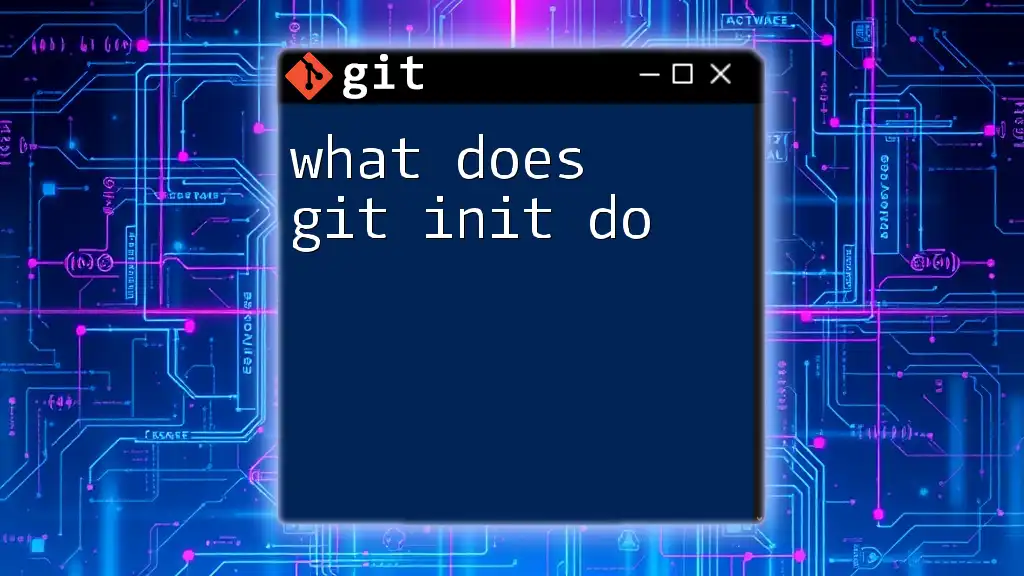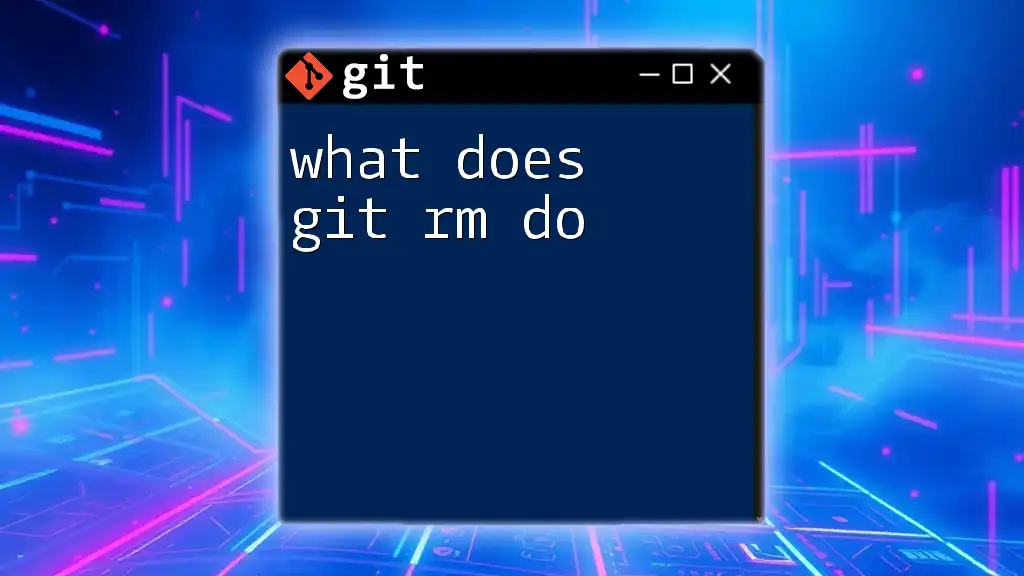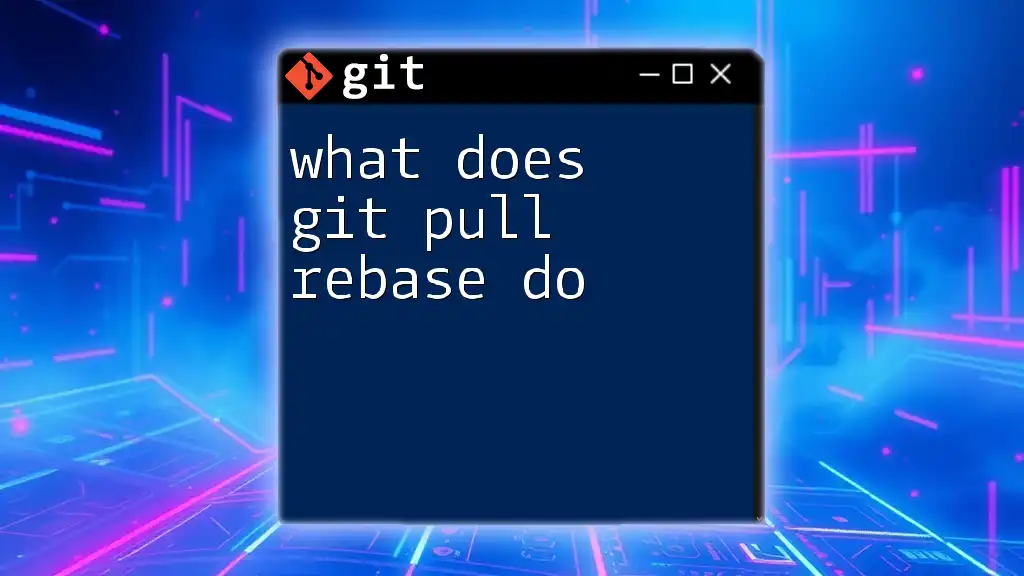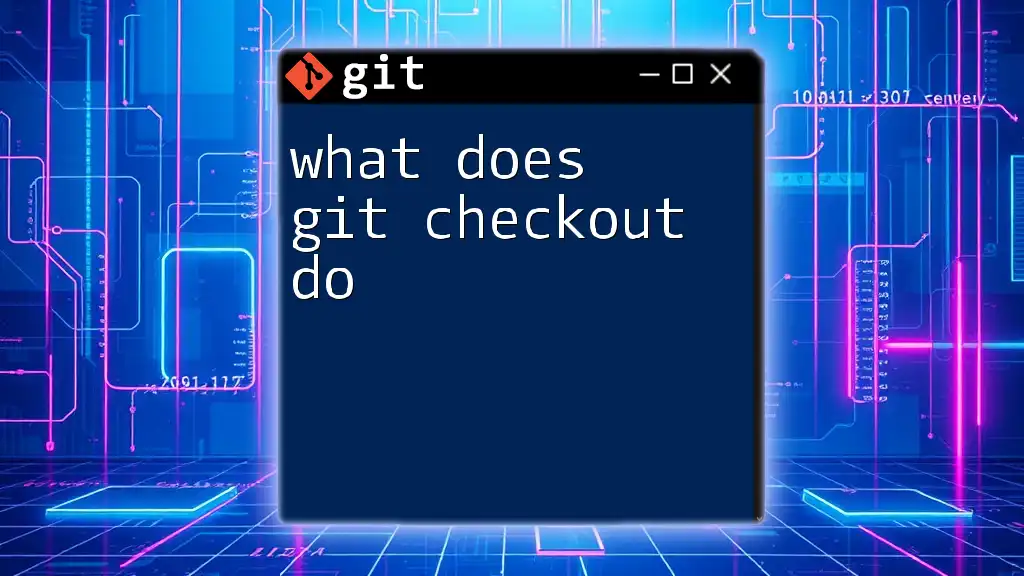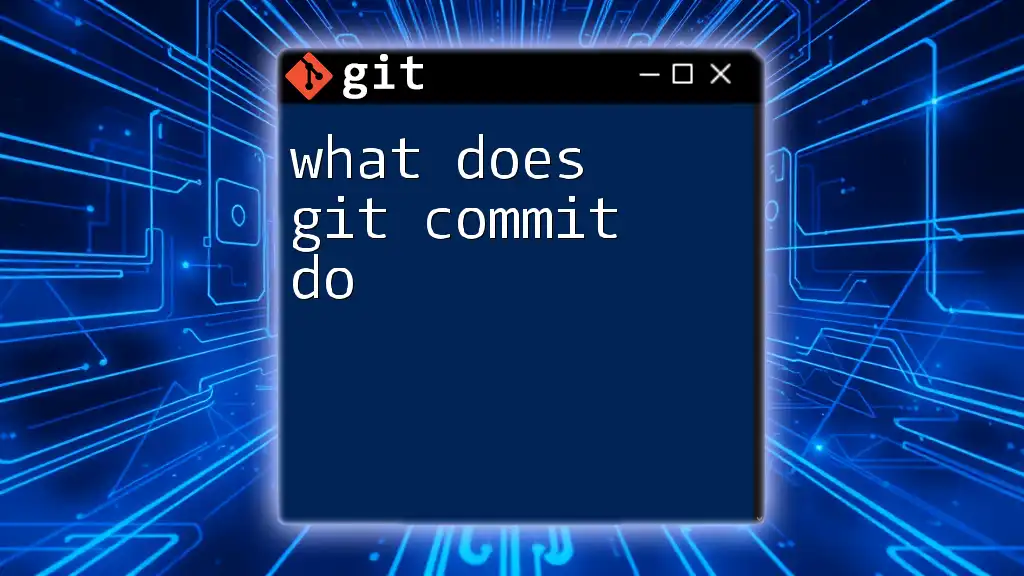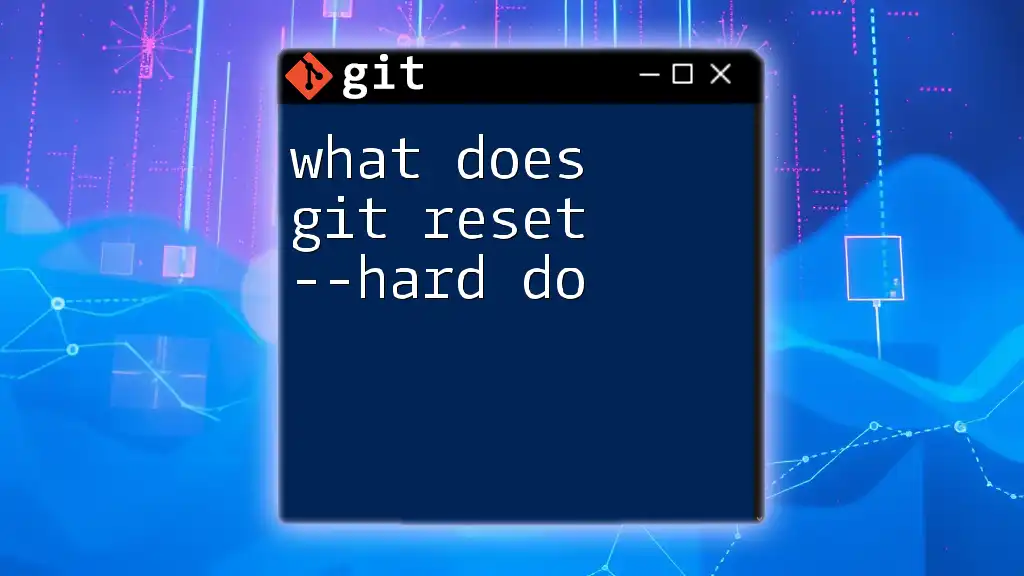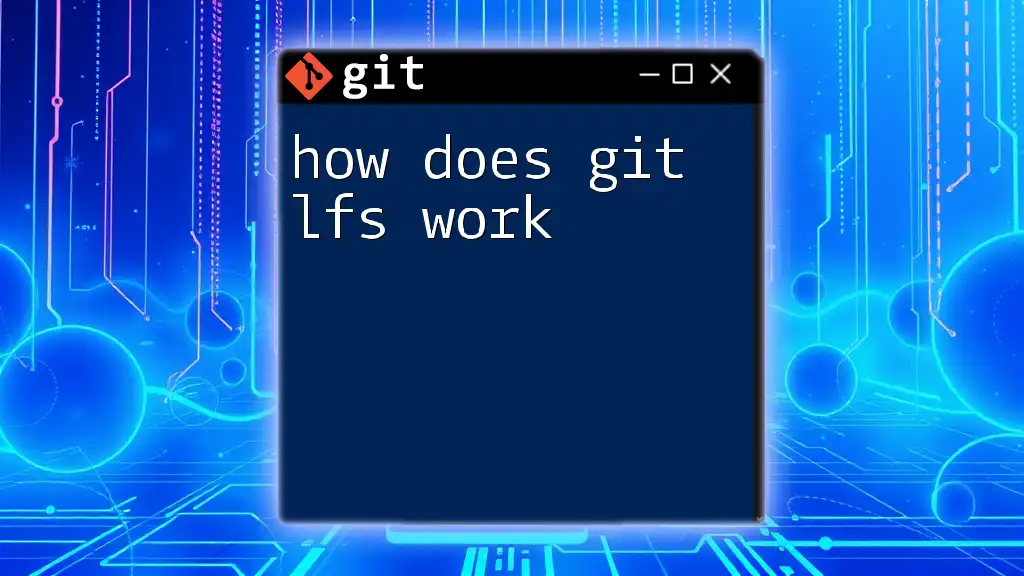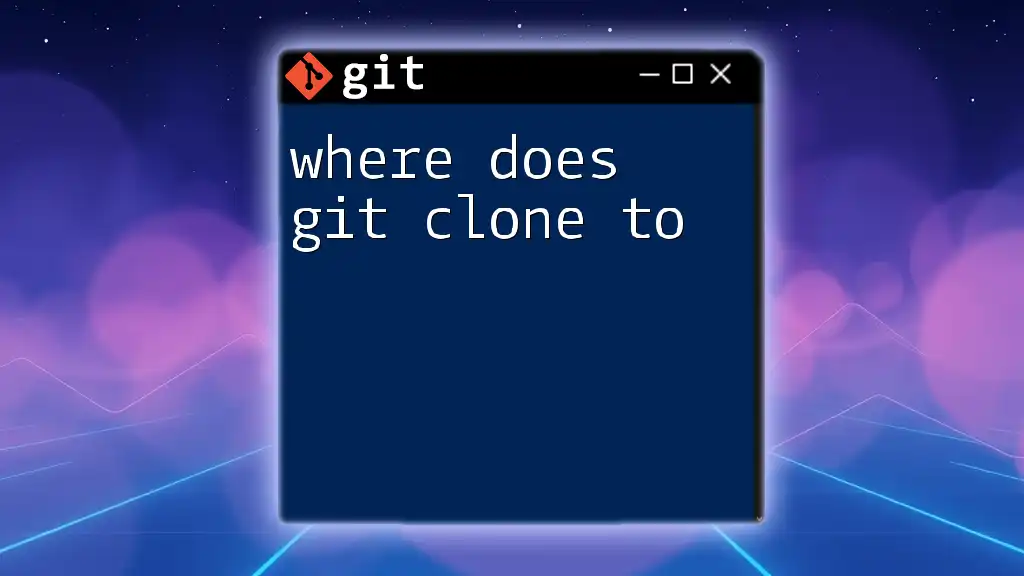Git stands for "Global Information Tracker," and it is a version control system designed to manage and track changes in source code.
Here's an example of a basic git command to initialize a new repository:
git init
What is Git?
Git is a distributed version control system focused on speed and efficiency in managing software development. Unlike traditional centralized systems, Git allows developers to work on local copies of codebases, merging their changes seamlessly with those of others. This decentralized approach enhances project collaboration and allows for a more streamlined workflow.
Git stands out in the crowded field of version control systems like SVN or Mercurial by prioritizing both performance and flexibility. Understanding what Git is and how it works is essential for anyone serious about software development.
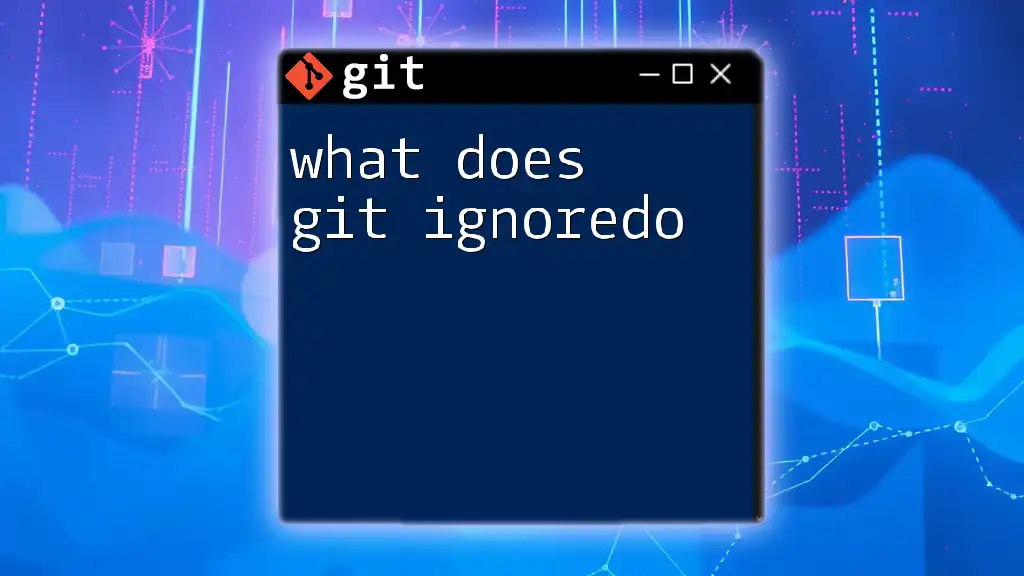
The Origin of the Name "Git"
Historical Context
Git was created in 2005 by Linus Torvalds, the founder of Linux. The need for a new version control system arose when Torvalds sought a mechanism that could handle the contributions from various developers efficiently.
Meaning Behind "Git"
The name "Git" has multiple interpretations that spark curiosity and humor:
- “Global Information Tracker” is the most widely accepted definition, emphasizing Git's role in managing collaborative projects across the globe.
- Some people humorously say it stands for “stupid”—a term commonly used in British slang. Torvalds himself has acknowledged this playful interpretation, adding a layer of levity to the tool’s nomenclature.
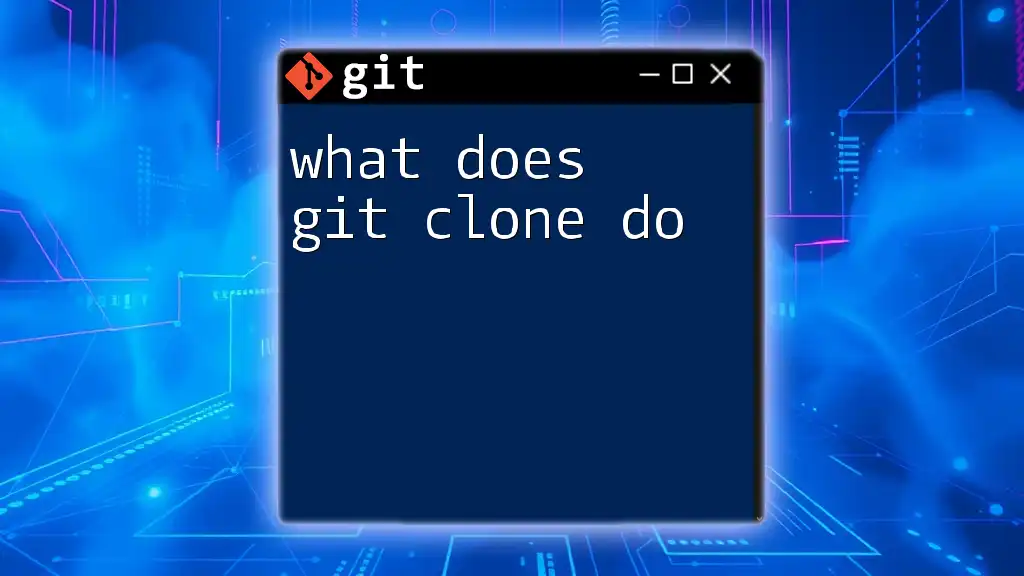
Breaking Down the Components of Git
Version Control
Version control is the backbone of all collaborative software development efforts. It tracks changes to code, documents, and other information over time.
- Git enables developers to maintain historical versions of their projects, making it easier to revert changes and understand project evolution.
How Git Implements Version Control
- Commits, branches, and merges are foundational concepts in Git:
- Commits represent snapshots of your project's state at a given point in time.
- Branches allow developers to diverge from the main line of development for experimentation without impacting the stable codebase.
- Merges integrate changes from different branches, allowing for collaborative inputs without data loss.
Distributed System
What is a Distributed System?
A distributed version control system like Git allows each team member to have a complete copy of the project's repository on their local machine. This means developers can work independently and offline, promoting flexibility.
Benefits of Distribution
- Collaboration: When changes are made, these can be pushed or pulled from a remote repository, enabling seamless collaboration among team members spread across various locations.
- Conflict Resolution: Git allows developers to have their local changes without affecting others until they’re ready to merge their work.
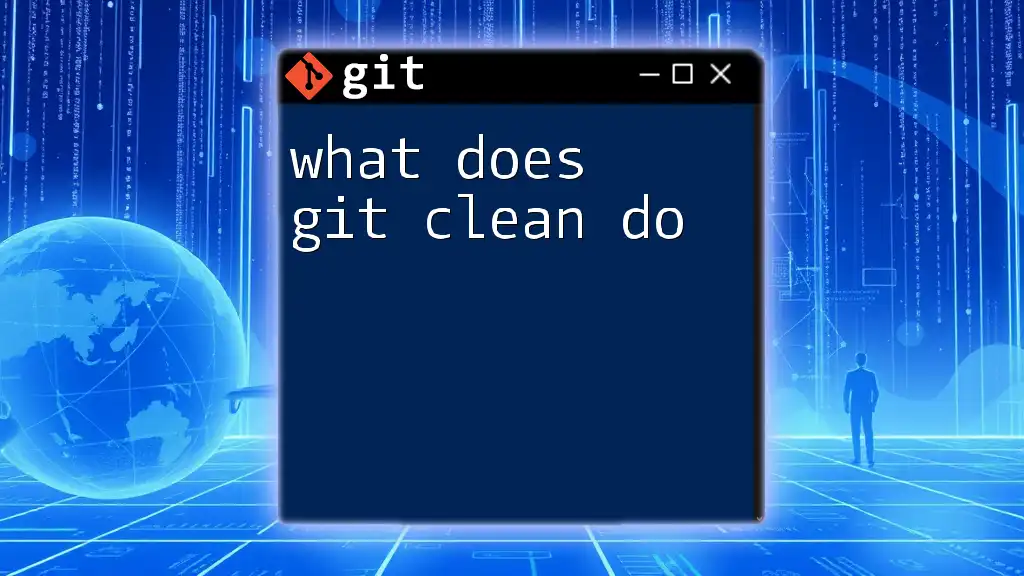
Git’s Architecture
Repositories
A repository is a central place where all files and their history are stored. There are two types of repositories in Git: local and remote.
- A local repository resides on a developer's machine, while a remote repository is hosted on a server accessible by multiple users.
Code Snippet Example: Initializing a Git repository
To begin tracking your project with Git, you can initialize a repository using the following command:
git init
Commits
Commits are the building blocks of Git’s version history, representing the changes made to the repository.
Each commit includes:
- A unique ID,
- Author information,
- A timestamp,
- A descriptive message about the changes.
Code Snippet Example: Creating a commit
To create a commit, you would first stage your changes and then use the following command:
git commit -m "Your commit message"
This command captures the current state of your project files and logs it for future reference.
Branches
Branches are powerful tools in Git that allow developers to work on multiple features independently while maintaining a stable main codebase (often referred to as the `main` or `master` branch).
Code Snippet Example: Creating a new branch
To create a new branch, you can use the command:
git checkout -b new-feature
This command not only creates a new branch but also switches your working context to that branch, making it easy to start working on a new feature or bug fix immediately.
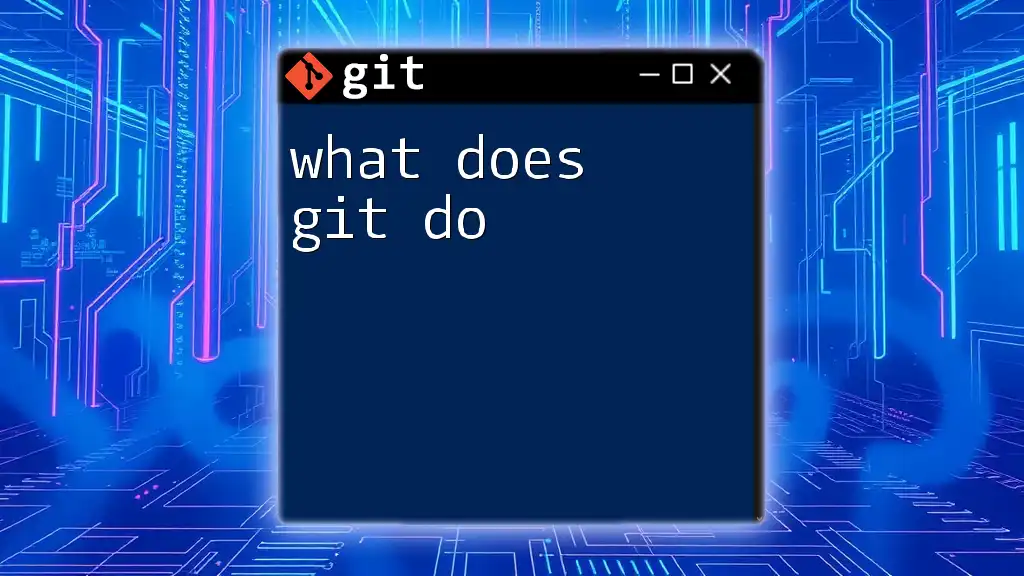
The Evolution of Git
Git has evolved significantly since its inception. Key milestones in its development include:
- The introduction of features such as rebasing, cherry-picking, and submodules, making Git an even more powerful and flexible tool for developers.
- Frequent updates have improved its usability, making it the preferred version control system for millions of developers worldwide.
Current Usage Statistics
As of now, Git is widely recognized as the top version control system in the software industry, with tens of millions of users and a vast array of open-source projects relying on it. Its integration with platforms like GitHub and GitLab has further solidified its importance in modern software development.
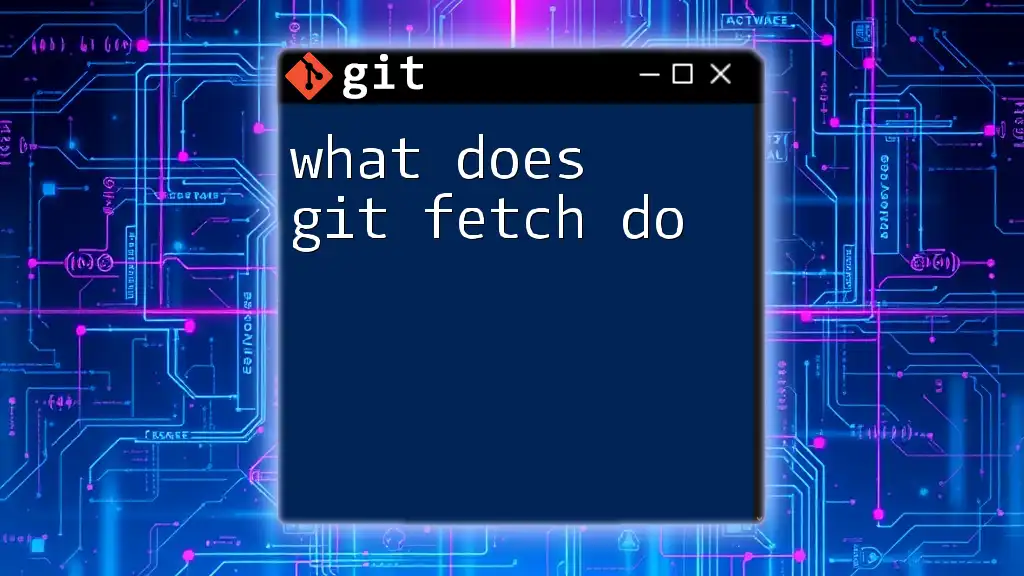
Why Understanding Git Is Crucial for Developers
Collaborative Development
Understanding Git is invaluable in collaborative settings, where multiple developers may contribute to a single project. Its powerful branching and merging features help prevent conflicts and ensure a smooth workflow.
Job Market Relevance
Employers frequently look for candidates that are proficient in Git due to its ubiquity. Many software development positions require experience with Git, and knowledge of this tool can set candidates apart from others.
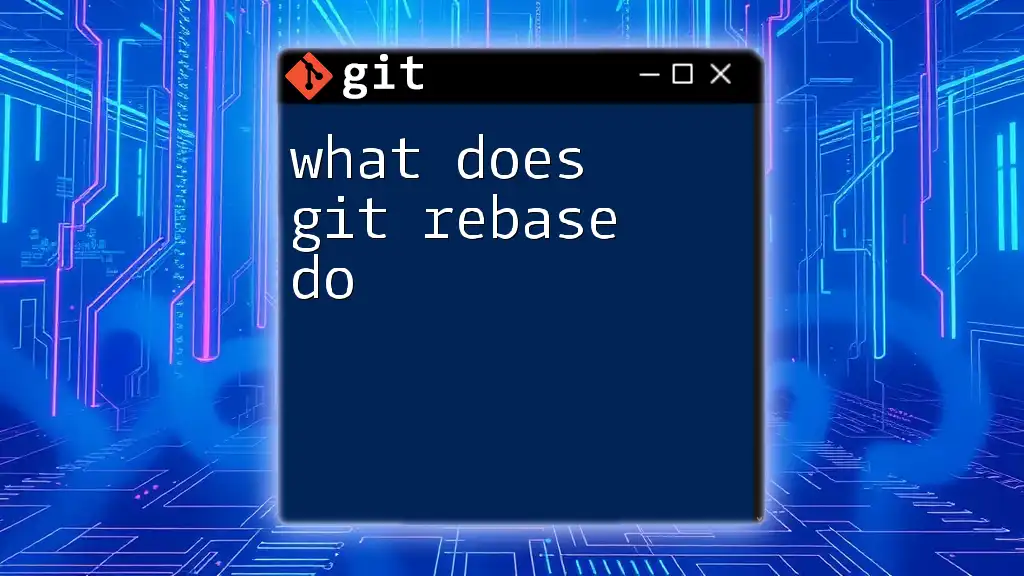
Conclusion
In conclusion, understanding what Git stands for—both in its nuances and its capabilities—empowers developers to enhance their workflows, embrace collaboration, and improve their coding practices. As you venture into using Git commands, remember that mastering this tool can significantly impact your productivity and professional opportunities.
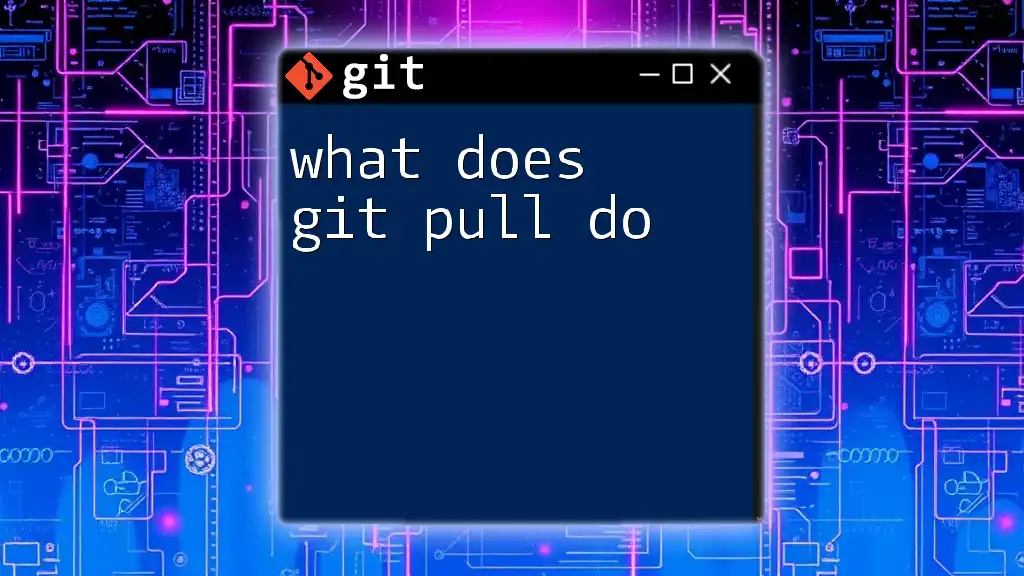
Additional Resources
For continued learning, check the official Git documentation as well as various online tutorials and books. These resources can deepen your understanding and proficiency with Git, enabling you to harness its full potential.
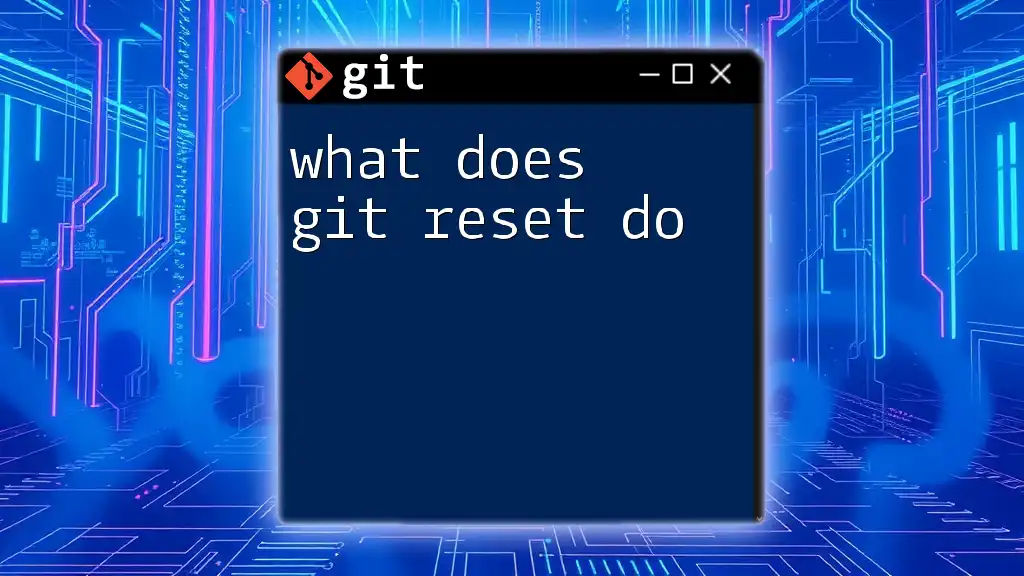
FAQs
Common Questions about Git
There are many misconceptions about Git, such as its complexity or the belief that it is only useful for large teams. In reality, Git is a versatile tool that can benefit individual developers and small teams just as much.
Building a Git Command Habit
To effectively practice using Git commands, consider starting with personal projects or contributions to open-source software. Regular use will help solidify your understanding and make commands second nature in your workflow.

